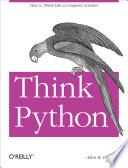
PHP & MySQL: The Missing Manual
If you can build websites with CSS and JavaScript, this book takes you to the next level—creating dynamic, database-driven websites with PHP and MySQL. Learn how to build a database, manage your content, and interact with users through queries and web forms. With step-by-step tutorials, real-world examples, and jargon-free explanations, you’ll soon discover the power of server-side programming. The important stuff you need to know: Get a running start. Write PHP scripts and create a web form right away. Learn the language. Get up to speed on PHP and SQL syntax quickly. Build a database. Use MySQL to store user information and other data. Make it dynamic. Create pages that change with each new viewing. Be ready for mistakes. Plan error messages to help direct users. Manage your content. Use the file system to access user data, including images and other binary files. Control operations. Create an administrative interface to oversee your site.
- ISBN 13 : 1449318886
- ISBN 10 : 9781449318888
- Judul : PHP & MySQL: The Missing Manual
- Pengarang : Brett McLaughlin,
- Kategori : Computers
- Penerbit : "O'Reilly Media, Inc."
- Bahasa : en
- Tahun : 2011
- Halaman : 500
- Halaman : 500
- Google Book : http://books.google.co.id/books?id=6zZARZf3_VUC&dq=inpublisher:O'Reilly&hl=&source=gbs_api
-
Ketersediaan :
If you can build websites with CSS and JavaScript, this book takes you to the next level—creating dynamic, database-driven websites with PHP and MySQL.









